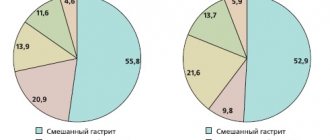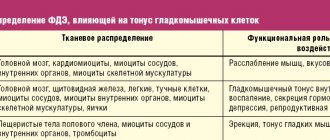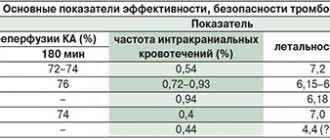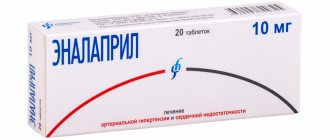Benefits for the body
Taurine should be taken by those who want to live longer. This substance has an antioxidant effect, inhibits the effects of free radicals, and prevents their negative effects on the body.
Note! The amino acid is produced by the human body in small quantities. Therefore, it is advisable to additionally obtain this nutrient externally from food or nutritional supplements.
With a lack of taurine, problems with the liver, heart, vision arise, and the functioning of the brain deteriorates. If the amino acid is normal, then it produces the following effect:
- improves brain function, tissue metabolism, digestion;
- normalizes the metabolism of fats, calcium and potassium, energy balance;
- relieves seizures, making taurine effective for epilepsy;
- stimulates the production of gamma-aminobutyric acid;
- regulates the release of prolactin and adrenaline;
- increases blood flow;
- removes bad cholesterol and excess water from the body;
- reduces appetite;
- increases endurance during physical activity;
- prevents retinal diseases and visual impairment, improves microcirculation in the conjunctiva.
Now Foods, Taurine, Double Strength, 1000 mg, 100 Vegetarian Capsules
★★★★★
604 rub.
More details
Taurine is useful for diabetes, as it increases tissue sensitivity to insulin and reduces the risk of vascular complications. This substance also lowers blood pressure and produces a vasodilating effect.
Interesting! In diabetes, taurine does not affect blood sugar levels. However, it reduces insulin resistance.
In case of liver diseases, taurine increases blood flow, normalizes metabolism, and launches recovery processes. It has a nutrient and hepatoprotective effect, helps with alcohol intoxication.
The video describes this nutrient in more detail:
Taurin (doctor Elena Seregevna Golesheva)
Multifunctional Taurine
Alla Smolyakova
Taurine was isolated in 1827 from ox bile, which is why it got its name: “taurus” means “bull” in Latin. This amino acid is present in the animal body in the form of a free, unbound form or in combination with bile acids. Taurine received little attention until researchers discovered that the substance regulates intracellular calcium in the heart.
Essential amino acid
In the 70s last century, scientists discovered that some animals, such as cats, cannot exist at all if there is no taurine in their food. We can say that taurine is simply irreplaceable, because... with its complete absence in food, animals develop retinopathy, leading to blindness, as well as cardiopathy, leading to the death of animals. Almost all tissues of the body - the brain, heart, blood cells, liver, skeletal muscles, retina - contain large concentrations of taurine. Discoveries in recent years have shown that taurine is at the same time a powerful antioxidant, membrane stabilizer, regulator of ion flows, bioenergetics, detoxifier, and prevents premature cell death.
Dibikor is a registered medicinal product (R No. 010409), the active principle of which is taurine (0.25 g tablets). The use of dibicor as part of combination therapy in patients with chronic heart failure has a positive effect on the functional state of the myocardium. The effect of Dibikor on blood pressure is noteworthy. The drug, although not an antihypertensive agent, nevertheless helps not only to lower blood pressure, but also to regulate its fluctuations throughout the day.
One of the main functions of taurine is the synthesis of bile acids. Taurine accelerates the formation of taurocholic acids by activating genes responsible for the synthesis of the enzyme 7-alpha hydroxylase. Bile consists mainly of cholesterol. Bile (cholic) acids promote the absorption of fats and facilitate the processing of fat by digestive enzymes. Taurine, contained in bile (taurocholic) acids, removes cholesterol from the body, lowering its concentration in the blood. Taurine also reduces the synthesis and secretion of triglycerides by liver cells (hepatocytes) and reduces the atherogenic index (LDL to HDL ratio), prevents the accumulation of abdominal fat, which is considered the most dangerous to health, and reduces insulin resistance. All of these effects help prevent heart disease and diabetes.
Cardiovascular diseases
Taurine, exhibiting an antioxidant effect, protects the body from disorders of the myocardium and blood vessels. As a result of fighting infections, immune cells release free radicals - unstable oxygen metabolites that destroy the cell membranes of “strangers” and kill them. But the same free radicals can damage an animal’s own tissues. When the level of taurine in the body is normal, it helps reduce excess free radicals.
Studies have shown that it lowers blood pressure and counteracts the negative effects of high salt intake. Taurine also protects the heart by affecting osmotic pressure, which can be disrupted by changes in electrolytes. Excess calcium can quickly lead to necrotic changes in the cell - this is counteracted by taurine. In addition, taurine regulates the balance of sodium and potassium in cardiac fibers, thereby supporting heart function.
According to epidemiological studies, a connection was found between dietary taurine consumption (which is mainly a fish diet and consumption of seafood) and mortality from coronary heart disease - the more a person consumes taurine, the less likely it is to die, which may be caused by disorders of the heart. aspects of the cardiovascular system. Taurine is an essential nutritional element. Regular consumption of taurine is the prevention of a number of diseases that arise from a deficiency of this sulfonic acid.
There are situations in which it is necessary to consume additional amounts of taurine when the body needs help. For example, the critical moment is when the myocardium loses taurine and at the same time its concentration in the blood decreases. In humans, the risk of developing such events may occur due to heart failure or exposure to large doses of radiation. Taurine deficiency in the body is also observed in diabetes mellitus. Taking taurine in such cases allows you to stabilize the course of the disease, avoid unfavorable outcomes and increase life expectancy.
Metabolic syndrome and diabetes
In 25% of people, the body's sensitivity to insulin is reduced, so the pancreas is forced to produce increased amounts of the hormone. Insulin resistance is one of the causes of metabolic syndrome, which is also characterized by fat deposition in the waist area, elevated levels of lipids and cholesterol in the blood, and other metabolic disorders. It is known that metabolic syndrome is the main risk factor for the development of cardiovascular diseases, such as hypertension, coronary heart disease, atherosclerosis of the vessels of the lower extremities, chronic ischemic disease, and diseases of the digestive system. Taurine plays a significant role in the treatment of the above diseases. In case of cardiovascular failure, its use helps to reduce congestion in the pulmonary and systemic circulation, reduces intracardiac diastolic pressure, increases myocardial contractility (increases the maximum speed of contraction and relaxation, improves contractility and relaxation indices).
According to several clinical studies, taurine can effectively reduce blood glucose levels in patients with type II diabetes mellitus (DM) both before and after meals. At the same time, the majority of patients noted an improvement in their general condition, the disappearance of dry mouth, a decrease in thirst, a cessation of skin and genital itching, an improvement in visual acuity, a decrease in pain in the legs and in the heart area, and an increase in performance. None of the patients noted any side effects of the drug or allergic reactions. With taurine monotherapy for type II diabetes, 20-30% of patients achieved ideal compensation of carbohydrate metabolism. In a number of patients who initially received combination therapy with hypoglycemic drugs with taurine, after three months of treatment, a significant decrease in blood glucose levels two hours after meals was observed. The decrease in glycemia under the influence of taurine was combined with a decrease in insulin resistance, and the higher the initial disturbances were, the more pronounced the positive dynamics were.
Taurine's effects help prevent diabetic complications, including neuropathy (nerve degeneration), retinopathy (blindness), and chronic heart failure.
Taurine is necessary for the metabolism of every cell of any organ. In this sense, he is irreplaceable. The need for taurine is high for normal human development, from prenatal development to old age. After childbirth, the concentration of taurine in human milk increases several times during the first day. After scientists found that the lack of taurine during artificial feeding of infants leads to impaired development of muscles and the central nervous system, taurine began to be added to infant formula.
Taurine improves myocardial contractility and hemodynamics. While taking it, shortness of breath disappears during the day and at night. Patients note the disappearance of pain in the heart area and increased performance. Taurine therapy leads to a gradual normalization of blood pressure and a decrease in body weight, the latter indicator being perhaps the most important in the treatment of diabetes complicated by cardiovascular diseases. Thus, the use of taurine, both in mono- and in combination therapy for diabetes mellitus and heart failure, leads to the normalization of carbohydrate and fat metabolism, which significantly improves the course of these diseases.
The positive effect of taurine was also found in non-alcoholic fatty liver disease (hepatitis, liver cirrhosis, etc.). Taking Dibicor increases blood flow in the liver, reduces the activity of cytolytic enzymes, and improves the clinical course of the underlying disease. The drug is also effective in cases where treatment with hormones or other hepatoprotectors is unsuccessful.
The article was published in the newspaper “Pharmaceutical Bulletin”
Indications for use
Taurine is used in cardiology as well as ophthalmology. Preparations based on this substance can be taken by healthy people, athletes and vegetarians. But the medicine is most useful for elderly patients, since their amino acid production gradually decreases and the risk of age-related diseases increases.
Indications for use of taurine:
- cardiovascular failure;
- hypertension, arterial hypertension;
- epilepsy;
- nervousness, insomnia;
- diabetes mellitus type 1 and 2;
- diabetic retinopathy;
- cataracts, age-related visual impairment;
- liver diseases, namely fatty hepatosis, hepatitis;
- drug intoxication in the treatment of heart disease.
The supplement is prescribed as an adjuvant to the main therapy.
Attention! The amino acid is sometimes used in the treatment of cancer. According to official studies, in cancer patients the level of taurine is minimal, and chemical drugs reduce it even more.
Gestational diabetes mellitus
One study examined 72 women, including 43 with a history of gestational diabetes mellitus (GDM), 7 with impaired glucose tolerance (IGT), and 22 with normal glucose tolerance. A glucose tolerance test was performed at 24-28 weeks of pregnancy [24]. Plasma taurine was found to be significantly lower in women with a history of GDM, but not in women with IGT. In addition, plasma taurine levels were inversely related to the area under the glucose curve before pregnancy and the C-peptide/glucose ratio during and after pregnancy (p < 0.05). The relative risk (RR) of impaired glucose metabolism during previous pregnancies (GDM + IGT) increased with decreasing taurine levels and taking into account adjustment for age, body mass index, and history of diabetes (RR = 0.980; p = 0.003). Thus, plasma taurine content may serve as a marker of changes in glucose metabolism in women with GDM.
So, taurine deficiency is observed in various diseases. Currently, we can talk about the important role of taurine as a modulator of many pathophysiological processes in the human body. There is reason to believe that sufficient consumption of taurine and elimination of its deficiency in the body will make it possible to more effectively combat many chronic non-infectious diseases.
Contraindications, precautions
The main contraindications to taking taurine are individual intolerance and children under 18 years of age. However, the amino acid can be harmful if it is also used for the following diseases:
- kidney disease;
- gastritis with high acidity, stomach ulcer;
- diarrhea;
- cholecystitis, cholelithiasis.
Relative contraindications are pregnancy and breastfeeding.
Note! Despite the fact that taurine does not have a toxic effect on the fetus, a supplement based on this substance should be taken under the supervision of a doctor when carrying a child.
Vitamins ENERGY with taurine and caffeine effervescent tablets No. 20
A country
Belarus
The country of production may vary depending on the batch of goods. Please check with the operator for detailed information when confirming your order.
Compound
Active ingredients: taurine, succinic acid, dry guarana extract (10% caffeine), caffeine, inositol, nicotinamide, calcium D-pantothenate, pyridoxine hydrochloride, riboflavin, cyanocobalamin. Excipients: acidity regulators (citric acid, sodium hydrocarbonate), dextrose, polyethylene glycol stabilizer, aspartame sweetener, passion fruit flavor. Contains a source of phenylalanine. Energy value of the tablet: 7 kcal/29 kJ
Application area
As a biologically active food supplement - a balanced composition of tonic, energetic and essential nutrients: succinic acid, amino acid taurine, caffeine, guarana extract, inositol, vitamins B2, B6, B12, PP, calcium pantothenate.
In this combination, the ingredients of the tablet exhibit a tonic effect on the psycho-emotional state of a person, cause a surge of energy and vigor. Improvement of well-being, increased physical and mental activity, are an additional source of vitamins, succinic acid, taurine, caffeine and inositol. succinic acid
one of the key links in the metabolism of proteins, fats and carbohydrates in the human body, is involved in the production of energy necessary to ensure life. As the load on any of the body systems increases, its functioning is maintained primarily through the oxidation of succinic acid. In conditions associated with increased stress, fatigue, stress, depression, hypoxia of various etiologies, additional administration of succinic acid is necessary.
Caffeine
the most popular alkaloid, a central nervous system stimulant, with a wide range of physiological effects. Increases activity and concentration. Stimulates the release of adrenaline, thereby increasing the level of fatty acids in the blood, which, in turn, provides additional energy to the body, without using more valuable glycogen. Even in moderate doses, it increases mental performance, improves mood, creates a feeling of vivacity and a surge of strength. For most people, caffeine prevents sleep and prolongs the time of active work. The dose of caffeine included in the complex is food grade and corresponds to a regular cup of coffee.
Guarana
a natural stimulant of the central nervous system, instantly gives energy to the body, stimulates brain activity. Guarana is similar in chemical composition and physiological activity to caffeine. Guarana and caffeine affect the body with a uniform effect over several hours.
Taurine
amino acid, which is an important element of the body’s antioxidant defense, reduces fatigue, lethargy, a feeling of weakness, and irritability during emotional overload.
Inositol
potentiates the effect of caffeine and taurine on physical and mental performance, which ultimately provides a powerful energizing effect of the composition. Inositol stabilizes protein structure under various types of stress, thereby increasing the functionality and survival of body systems under stressful conditions.
The vitamins included in the complex contribute to the active action of the listed energy-tonic components, and also help improve metabolism and the ability of the body to mobilize reserve capabilities. B vitamins play a vital role in a number of key body functions, including energy production and brain and nervous system function. They improve performance and endurance.
Vitamin PP (Vitamin VZ)
participates in many redox reactions, carbohydrate-lipid metabolism in cells, and the formation of enzymes that provide cells with energy.
Pantothenic acid
better known as vitamin B5, plays a large role in energy metabolism. It is a coenzyme for the production of energy in chemical reactions from carbohydrates and fats supplied with food.
Vitamin B2 (riboflavin)
coenzyme of many biochemical processes. Helps improve brain activity, stabilizes mood, and helps provide the body with additional energy.
Vitamin B12 (cyanocobalamin)
promotes the production of blood cells. Participates in the regulation of protein metabolism, the production of amino acids and nucleic acids. B12 prevents cells from experiencing oxygen starvation. Affects the formation of myelin, the sheath of nerve fibers, helping to improve the condition of the nervous system.
Mode of application
Adults take one tablet daily during or after meals. Before use, dissolve the tablet in a glass (200 ml) of drinking water. The tablets should not be swallowed, chewed or dissolved in the mouth.
Contraindications
Individual intolerance to components, phenylketonuria. It is not recommended for use by children under 18 years of age, during pregnancy and breastfeeding, as well as by persons suffering from increased nervous excitability, insomnia, arterial hypertension, angina pectoris, glaucoma, and severe atherosclerosis. It is recommended to consult a doctor before use. Not a medicine.
Storage conditions
Store in a protected place, out of reach of children, at a temperature not exceeding 25 °C and a relative humidity not exceeding 70%. Close the cap tightly.
Best before date
2 years from the date of manufacture.
Dosage and regimen
The dosage of taurine depends on the indication. It should be consumed 20-30 minutes before meals. In case of increased stomach acidity, the drug must be taken after meals. Otherwise, it will irritate the gastric mucosa.
For cardiovascular diseases, dietary supplements are sufficient to drink 250 mg 2 times a day. The course of admission is 1 month.
Patients with type 1 and type 2 diabetes mellitus should take 1 capsule of taurine with a concentration of 500 mg 2 times a day. The course of treatment is 3-6 months.
Attention! For diabetics, the maximum daily dose is 1.5 g, for patients with heart disease - 3 g. Athletes can take up to 5 g per day.
For epilepsy, it is recommended to take the drug with taurine at night. For pregnant and lactating women, the dose should be selected by a doctor.
The feasibility of using taurine in the treatment of non-alcoholic fatty liver disease
In recent years, non-alcoholic fatty liver disease (NAFLD) has been considered as an integral component of metabolic syndrome (MS). MS is a complex of interrelated factors, including insulin resistance, impaired carbohydrate metabolism, abdominal-visceral obesity, arterial hypertension, atherogenic dyslipidemia, etc. The liver in MS is one of the main target organs [1, 2]. According to a number of sources, the incidence of liver pathology in patients with MS ranges from 37 to 64%.
NAFLD: etiology, pathogenesis, goals of therapy
The etiological factors for the development of NAFLD include metabolic disorders and endocrinopathies (insulin resistance or diabetes, obesity, gout, hyperlipidemia, hypothyroidism, hyperthyroidism, Cushing's syndrome, etc.); violation of the processes of digestion and absorption (pathology of the pancreas, small intestine, malabsorption syndrome, excess nutrition, fasting, parenteral nutrition, bacterial overgrowth syndrome in the intestine); the effect of drugs, chemical substances, phytotoxins, fungal toxins; infections; anemia, cardiovascular and respiratory failure, etc. [3, 4]. NAFLD has several stages of development: from simple steatosis to steatohepatitis, fibrosis and cirrhosis of the liver. Symptoms characteristic of liver diseases are absent in most patients, only some of them note minor discomfort or pain in the right upper quadrant of the abdomen [1].
In the majority of patients, NAFLD progresses favorably, without significant clinical and morphological changes. Since liver puncture is not always possible, the true prevalence of this disease in the population is unknown. More often, patients turn to doctors for other reasons, for example, about arterial hypertension (AH), cholelithiasis, coronary heart disease (CHD), peripheral vascular diseases, etc. [5, 6].
In this regard, treatment is prescribed only to patients with a high risk of NAFLD progression or in the presence of pronounced changes in liver biochemical parameters (increased activity of alanine aminotransaminase (ALT) and aspartate aminotransaminase (AST) in the blood by 2-3 times or more). MetS causes an extremely high risk of developing type 2 diabetes, coronary artery disease and other diseases associated with atherosclerosis [7–10], as well as fatty liver disease [2]. Among the mechanisms of liver damage, it is necessary to highlight a violation of the synthesis and excretion of bile in hepatocytes, activation of lipid peroxidation (LPO), and inhibition of the activity of the reticuloendothelial system of the liver.
The literature provides numerous data on possible pathogenetic mechanisms of liver damage in MS, as well as on the role of the liver in the development and progression of MS. The liver is the only organ where bile acids are synthesized. The accumulation of free fatty acids in the liver leads to impaired permeability of cell membranes, including for glucose, and impaired utilization of glucose by hepatocytes, which contributes to increased tissue resistance to insulin and the maintenance of hyperglycemia. Under conditions of insulin resistance, lipids accumulate in the liver and synthesize large amounts of very low-density lipoproteins (VLDL), which are quickly modified into low-density lipoproteins (LDL) and, oxidized by free radicals, are a leading factor in the development of atherosclerosis [7, 10, 11] .
An increase in the concentration of cholesterol (CH) in cells leads to changes in the composition, physical properties and functions of cell membranes: receptor-mediated endocytosis, reactivity of membrane-bound enzymes, membrane permeability to ions and metabolites. Maintaining a certain concentration of cholesterol in plasma membranes ensures the necessary constancy of the physical properties and physical state of the membrane bilayer of a normally functioning cell, which underlies cholesterol homeostasis and is maintained by the balance of cholesterol intake and removal from the body. Thus, a vicious circle is formed: constant hyperinsulinemia depletes the secretory apparatus of beta cells of the pancreas, which first leads to high fasting glycemia, decreased glucose tolerance and subsequently to type 2 diabetes [12], hyperinsulinemia suppresses the breakdown of fats, which contributes to the progression of obesity. In turn, adipocytes of visceral adipose tissue secrete free fatty acids, which enter directly into the portal vein of the liver [13].
Recently, many works have appeared devoted to the study of the effect of hyperglycemia on the metabolism of nitric oxide as the main link in the mechanism of the pathogenesis of endothelial dysfunction. With chronic hyperglycemia, there is a local decrease in the rate of nitric oxide synthesis in the vascular endothelium, which contributes to the occurrence of ischemia [14]. An increase in oxygen consumption by hepatocytes is accompanied by the formation of active radicals and an increase in the reaction of lipid peroxidation (LPO). The substrate for LPO is free fatty acids, highly reactive compounds, the accumulation of which stimulates the development of inflammatory reactions [15].
Impaired metabolism and absorption of bile acids and excessive absorption of lithocholic acid lead to intrahepatic cholestasis as a result of damage to cholangiocytes by toxic bile acids, hepatic dyscholia and disruption of the chemical composition of bile. Primary bile acids - cholic and chenodeoxycholic - are synthesized in the liver from cholesterol, conjugated with glycine or taurine and secreted as part of bile. Secondary bile acids, including deoxycholic and lithocholic, are formed from primary bile acids in the colon by bacteria. Ursodeoxycholic acid and a number of other secondary bile acids are formed in negligible quantities. In chronic cholestasis, an increased amount of these acids is detected. Normally, the ratio of the amount of bile acids conjugated to glycine and taurine is 3:1. The sulfur-containing amino acid taurine forms conjugates with bile acids in the liver. The resulting conjugates, for example taurocholic and taurodeoxycholic acids, are part of bile and, being surfactants, contribute to the emulsification of fats in the intestine. Recently, it has been found that taurine helps improve energy and metabolic processes, normalizes the function of cell membranes, and stimulates reparative processes in dystrophic diseases.
The progression of steatohepatitis depends on the level of activity of the pathological process in the liver. Non-alcoholic steatohepatitis is characterized by a benign and asymptomatic course. However, histological changes are found in almost half of patients, and 20% develop cirrhosis. In this regard, all efforts aimed at treating patients with non-alcoholic steatohepatitis are considered as prevention of liver cirrhosis. This goal determines the main goals of therapy: normalization of body weight through diet and physical activity; withdrawal of hepatotoxic drugs; normalization of carbohydrate, lipid and purine metabolism parameters; an increase in the content in hepatocytes of amino acids necessary for the synthesis of apoproteins and coenzymes for the synthesis of VLDL; reduction of endotoxemia; normalization of the activity of lipid peroxidation processes; removal of toxic metabolites; inhibition of inflammation in liver tissue, etc.
The use of taurine in the treatment of NAFLD and MS
The basic method in the treatment of NAFLD is the use of hepatoprotectors. The main mechanisms of action of hepatoprotectors: increasing the neutralizing function of hepatocytes as a result of increasing the reserves of glutathione, taurine, sulfates, increasing the activity of enzymes involved in the oxidation of xenobiotics; stabilization and repair of cell membrane structures as a result of stopping lipid peroxidation reactions and binding oxidation products; stimulation of the oxidation of fatty acids and acetate; increased synthesis and content of glycogen in liver cells; restoration of transport systems for bile components.
The search for effective drugs with lipid-lowering properties for the treatment of metabolic disorders continues. Taurine-based drugs have proven themselves in the complex treatment of patients with CVD and type 2 diabetes. Taurine is non-toxic, does not bind to proteins, has an antioxidant, detoxifying and osmoregulatory effect, and helps reduce the synthesis of nitric oxide in macrophages [16]. A positive effect of taurine-based drugs on the lipid spectrum of the blood was noted. Taurine is a substance that is not metabolized by the liver and is directly included in metabolism. Combining with cholic acid, taurine forms so-called paired bile acids and is directly involved in the absorption of fats and fat-soluble vitamins, and also promotes the degradation of cholesterol [17]. Thus, taurine can be used to correct and prevent metabolic disorders in the treatment of NAFLD.
A double-blind, placebo-controlled comparative study was conducted at the Central Research Institute of Gastroenterology (Moscow), which assessed the clinical effectiveness of taurine in patients with NAFLD and type 2 diabetes (mild course, impaired glucose tolerance) in comparison with placebo. The study included 40 patients who met the inclusion criteria. Duration and regimen of treatment: patients received the drug Dibikor (company) at a dose of 0.5 g 2 times a day 20 minutes before meals for 3 months. Concomitant therapy: patients with type 2 diabetes (impaired glucose tolerance) continued to take the therapy prescribed by the endocrinologist: metformin hydrochloride 1000 mg per day; patients with coronary artery disease, hypertension, and hypertension took amlodipine 5 mg per day and enalapril maleate 20 mg per day. The criteria for effectiveness were the dynamics of clinical and biochemical blood parameters (total bilirubin, ALT, AST, alkaline phosphatase (ALP), gamma-glutamyl transpeptidase (GGTP), glucose), lipid spectrum (cholesterol, LDL cholesterol, HDL cholesterol, TG), weight loss . After the end of the study, in order to compare the results, the patients were divided into 2 groups: the first group - patients who received taurine (Dibikor), the second group - patients who received placebo. To process the data, the standard statistical package Statistica 6.0 was used using nonparametric estimation methods (Wilcoxon-Mann-Whitney test). The critical level of significance in the study was set to ≤ 0.05.
As a result of the study, the following data were obtained: drug tolerability was assessed as good in 16 patients (50%) taking taurine (Dibikor), as satisfactory in 4 patients (12.5%), no unsatisfactory assessment was noted. Among patients taking placebo, good tolerability was noted in 10 patients (31.25%), satisfactory in 2 (6.25%), and no unsatisfactory assessment was recorded. Based on these results, it can be concluded that there was no significant difference between the drug and placebo in terms of tolerability. During treatment, 20 patients noted an improvement in their general well-being (of which 18 took Dibikor and 2 took placebo): a decrease in fatigue – 11 patients; reduction in the frequency of attacks of shortness of breath - 3 patients, attacks of angina - 4 patients; could not characterize changes in the well-being of 2 patients. During the initial examination, excess body weight was detected in 50% of patients. Patients receiving taurine noted faster weight loss - on average by 1 kg per month, which was confirmed by objective data.
Analysis of biochemical blood parameters before treatment showed an increase in ALT and AST levels. At the same time, the ALT concentration was higher than the AST concentration. Patients in the first group had a significantly more pronounced lipid-lowering effect (decrease in cholesterol levels) of therapy than in patients receiving placebo (the levels of cholesterol and LDL increased insignificantly, the reason for the significant increase in HDL is not yet clear). TG levels did not significantly decrease in patients taking Dibicor. While taking taurine, the levels of alkaline phosphatase (ALP), cholesterol, LDL, and glucose decreased, and in patients taking placebo, they increased (Tables 1, 2). It is important to note that ALT is a more specific marker of hepatocyte damage than AST, due to its predominant localization in the liver parenchyma. Another specific liver enzyme is gamma-glutamyl transpeptidase (GGTP), the level of which was also elevated in 35 patients (87.5%). An increase in bilirubin levels was detected in 5 patients (12.5%), the maximum value did not exceed 41.1 µmol/l. Lipid spectrum indicators (total lipid content, LDL, TG) in the examined patients were increased. Taking Dibikor statistically significantly improved the indicators of bilirubin, AST, ALT, cholesterol, fibrinogen, weight, body mass index (BMI) (Table 3, 4).
Conclusion
As a result of the study, the following conclusions were made: taking the drug Dibicor is well tolerated by patients, has a lipid-lowering and hepatoprotective effect, helps reduce body weight and improve the well-being of patients; the use of taurine in NAFLD leads to an improvement in carbohydrate and fat metabolism and can be recommended for the treatment and prevention of NAFLD. Thus, the use of taurine-based drugs in the treatment of MS and NAFLD is advisable not only at the stage of liver tissue damage or carbohydrate metabolism disorders confirmed by laboratory data, but also to prevent their development.
Reviews about the application
Leave feedback about the supplement. Write what pros and cons you found:
| Leave your review | |
| 1 2 3 4 5 | |
| Send Cancel | |
Send your review
Taurine tablets and capsules
Average rating: Number of reviews: 0
Based on the reviews, the following advantages were identified:
- supplements are really effective for type 1 and type 2 diabetes;
- the composition, in addition to taurine and useful substances, does not contain harmful impurities;
- improve vision;
- support the functioning of the heart, liver, pancreas;
- normalize blood pressure;
- reduce swelling.
However, buyers claim that in case of ophthalmological diseases it is necessary not only to drink dietary supplements, but also to use eye drops.









